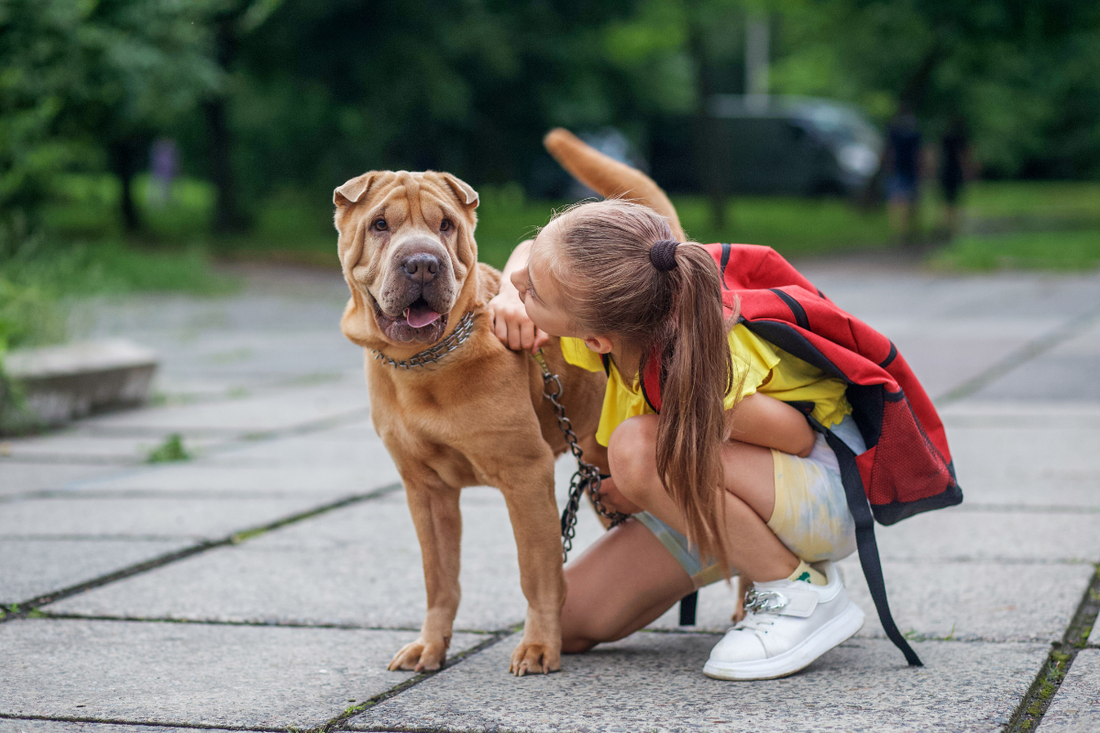Helping Your Dog When Kids Go Back to School

Great news! The kiddos are heading back to school—if they haven't already—and while that means you'll be adjusting to a new schedule, your family dog will be going through changes too.
For your dog, this transition isn't as simple as it might be for you. They've spent the summer with more time and attention from the kids, and suddenly seeing them less can be quite stressful. It's essential to understand how this change impacts your furry friend and what you can do to help them cope.
Here's a detailed guide to recognizing signs of stress in your dog and ways to ease their anxiety.
Recognize the Signs of Stress

Once the kids are back in school, it's crucial to observe your dog's behavior closely. Stress in dogs can manifest in several ways, and it's often through heightened or exaggerated actions. Here are some common signs to watch for:
1. Pacing: A stressed dog may walk back and forth continuously, unable to settle down.
2. Excessive Barking: If your dog starts barking more than usual, it could be a sign of distress.
3. Panting: Dogs often pant when they're anxious, even if they haven't been physically active.
4. Waiting by Windows and Doors: Your dog might spend more time looking out the window or sitting by the door, waiting for the kids to come home.
Monitor Outdoor Activities

If your dog spends time outside, their separation anxiety might lead to escape attempts. This can be dangerous, so it's essential to take precautions:
1. Digging and Jumping: Watch for attempts to dig under fences or jump over them. This behavior often indicates that your dog is trying to find the kids.
2. Identification: Ensure your dog is microchipped and wears a collar with contact information and your address. This helps if they do manage to get out.
Helping Your Dog Adjust

To ease your dog's transition, focus on providing love, attention, treats, and playtime. These elements can be loving distractions that help your dog forget about the absence of the kids during the day. Here are some specific strategies:
1. Extra Attention: Spend more time with your dog when the kids are at school. Extra petting, cuddling, and talking to them can help soothe their anxiety.
2. Treats: Use treats to reward good behavior and to keep them occupied. Puzzle toys filled with treats can be particularly effective in keeping your dog's mind engaged.
3. Playtime: Increase the amount of playtime. Engaging your dog in physical activities like fetch or tug-of-war can help burn off excess energy and reduce stress.
4. Training Sessions: Short training sessions can be a great way to keep your dog's brain active and distract them from missing the kids.
Additional Tips for Managing Separation Anxiety

Separation anxiety is a common issue, and there are several more tips to help manage it effectively:
1. Create a Routine: Dogs thrive on routine. Try to keep a consistent schedule for feeding, walks, and playtime. This predictability can help reduce anxiety.
2. Comfort Items: Provide your dog with comfort items such as a piece of clothing that smells like the kids or a favorite blanket. These can provide reassurance when they're feeling anxious.
3. Calm Environment: Ensure that your dog has a quiet, safe space to relax. This could be a specific room or a cozy bed where they feel secure.
4. Gradual Desensitization: Gradually accustom your dog to being alone. Start with short periods and slowly increase the duration. This can help them get used to the new routine without feeling overwhelmed.
When to Seek Professional Help
Sometimes, despite your best efforts, a dog’s anxiety may require professional intervention. If your dog's stress doesn't improve or worsens, consider consulting a veterinarian or a professional dog trainer. They can provide additional strategies and, if necessary, recommend treatments or therapies that can help.
Adjusting to the kids going back to school can be a challenging time for your dog, but with patience, love, and the right strategies, you can help them through this transition smoothly. Remember, your dog's well-being is a reflection of the care and attention you provide, so take the time to make this change as stress-free as possible for them.

💡 Bonus Tip: Take Them On Long Walks
Of course with the right walking gear. We recommend a no pull harness that are gentle. There's no harsh pulling, after all! They make your dog feel more comfortable, but there's even more to to it. The harness lets your dog avoid the pain associated with pulling.
This means that walks are more cooperative. A no-pull harness contributes to a positive, trusting relationship. Comfortable walks strengthen that connection.
They make every walk a walk to look forward to.
If you want to get your dog in a no-pull harness, the Joyride Harness is the perfect choice. It has lots of safety features and is very comfortable for your dog.
Check out our reviews to see why other pet parents love our harness, and then shop the Joyride for your dog today!





















